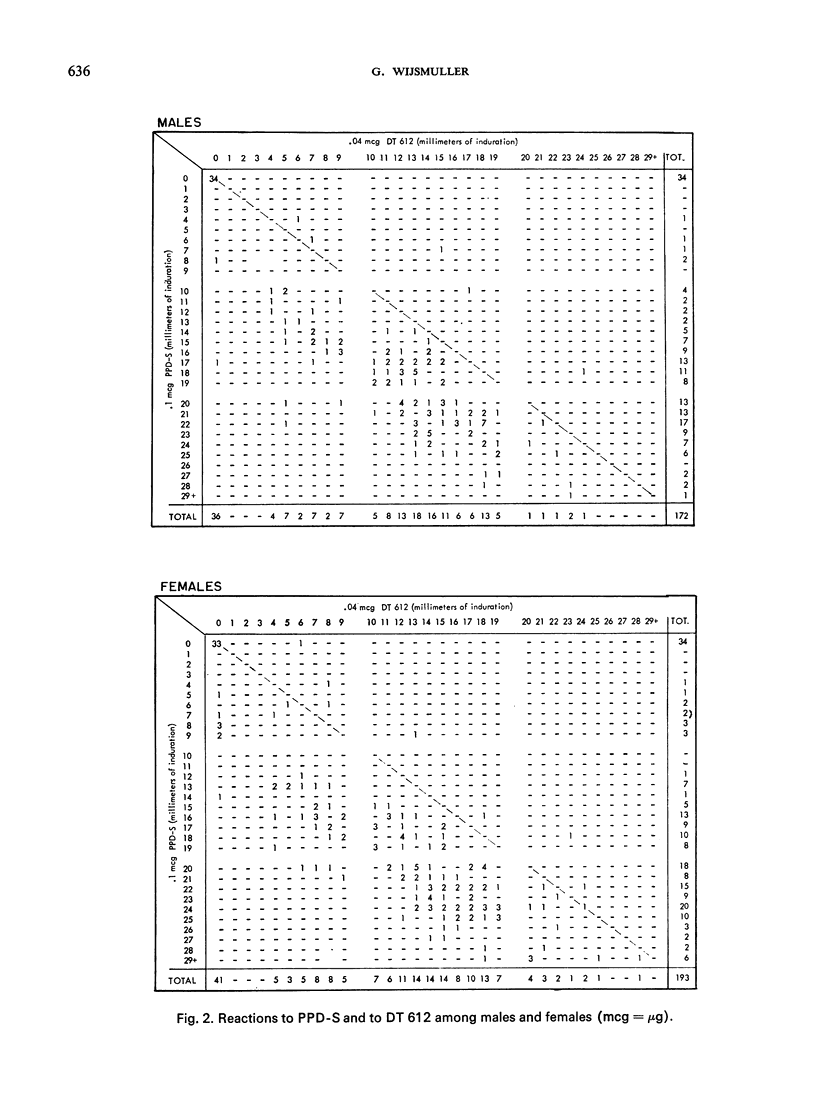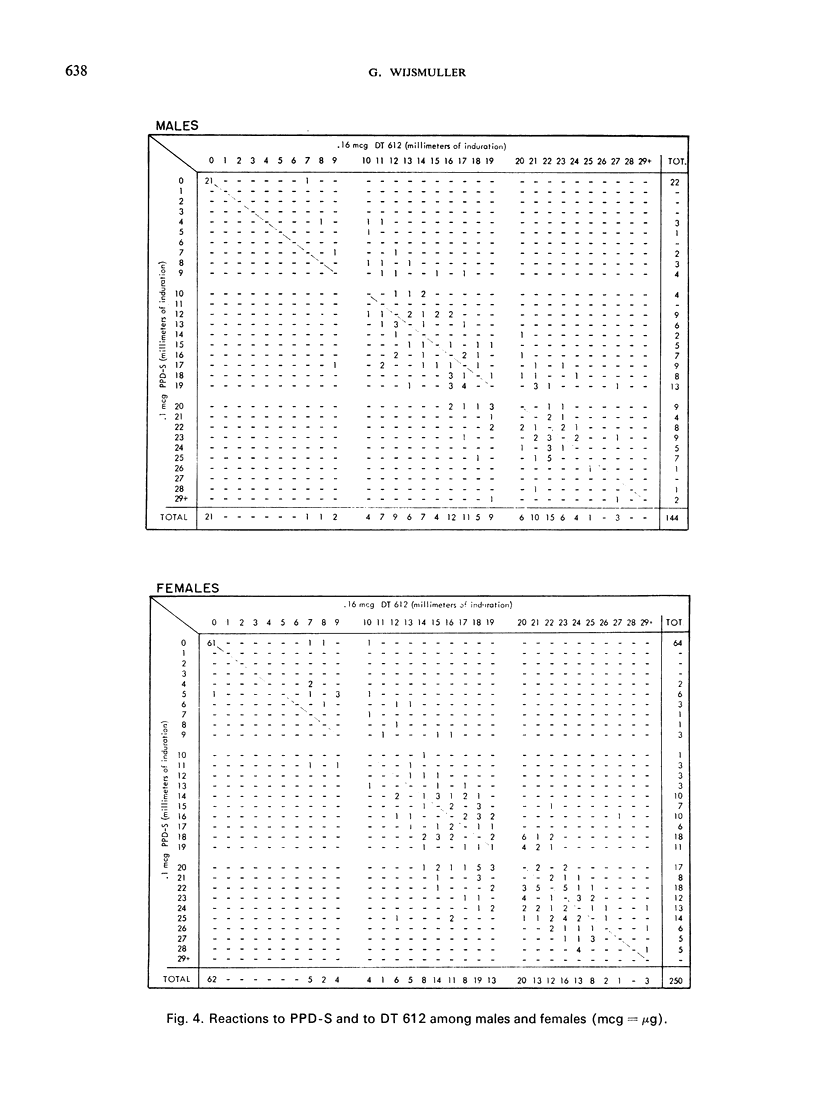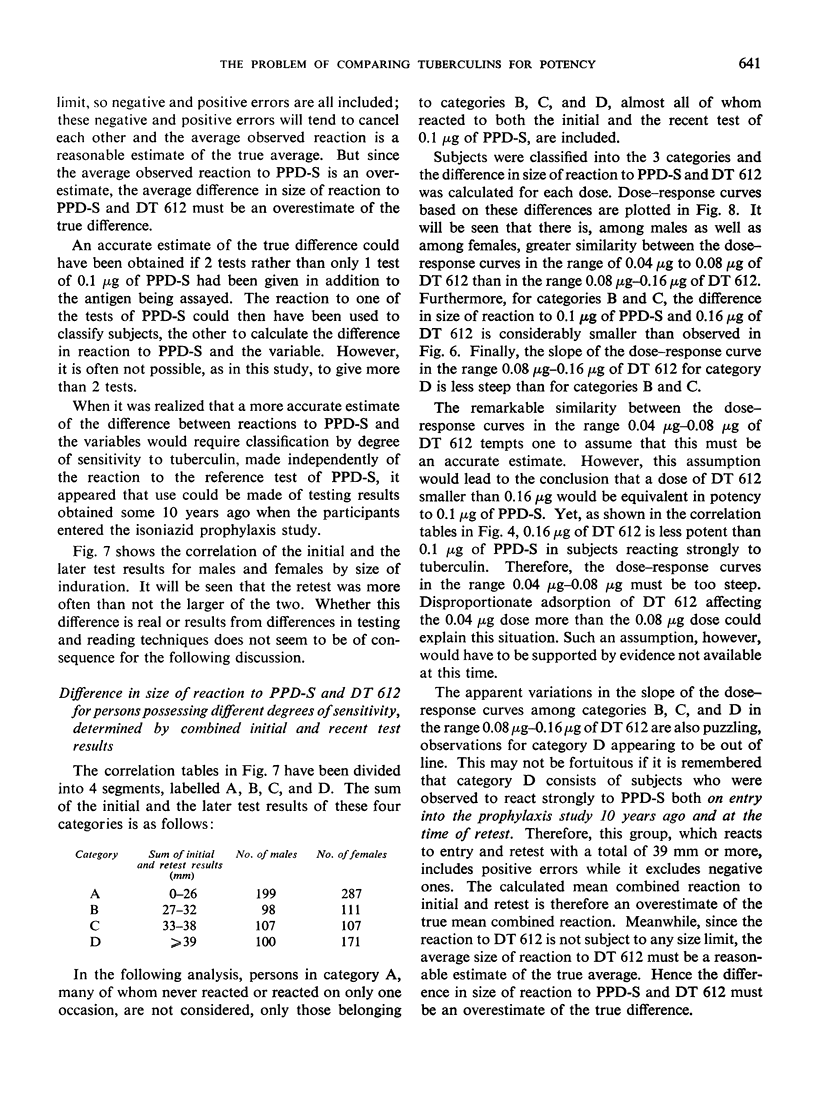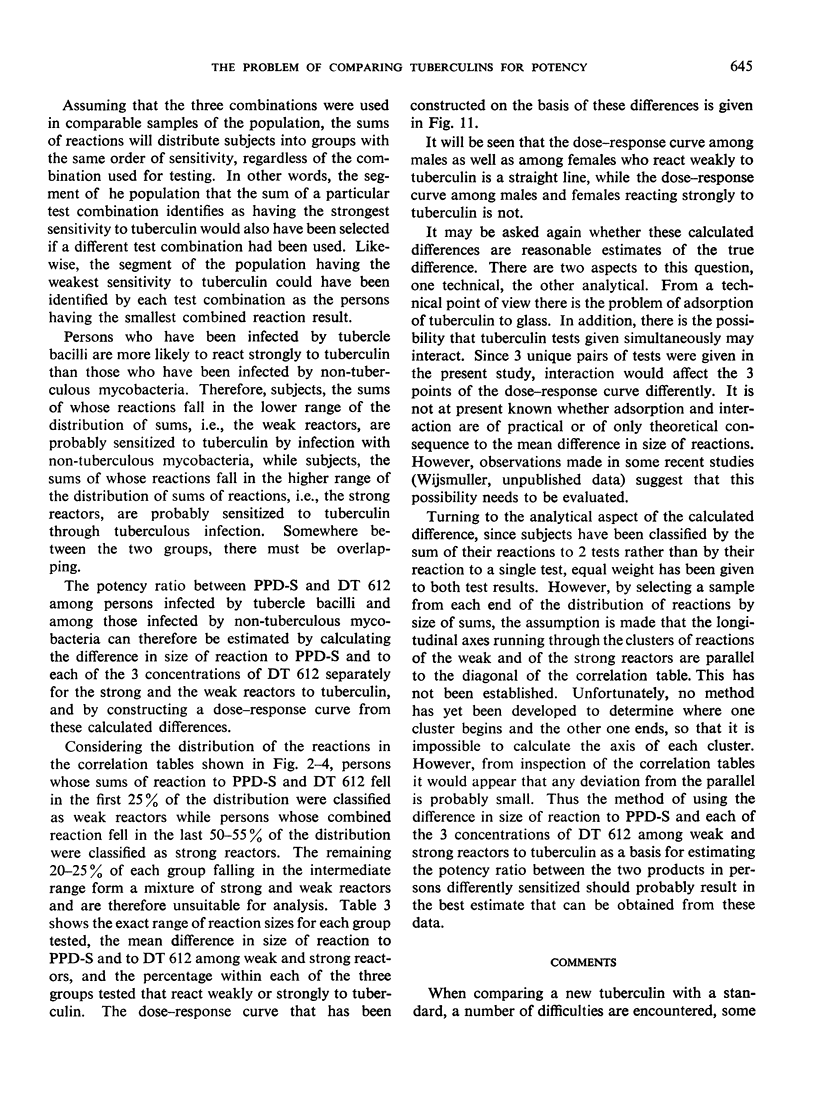Abstract
A total of 1183 patients in a mental hospital who had 10 years earlier participated in a study of isoniazid prophylaxis were given 2 tests, one containing a standard dose of a reference tuberculin, the other containing one of 3 concentrations of a preparation of tuberculin for assay. Combinations were assigned at random to groups that were selected to be as similar as possible with respect to age, sex, previous reaction to tuberculin, and history of isoniazid or placebo medication. The report discusses the problem of characterizing the new preparation in relation to the standard on the basis of limited information, as collected in a population that had acquired sensitivity to tuberculin, not only by infections with Mycobacterium tuberculosis but also by infections with non-tuberculous mycobacteria. After various analytical approaches were rejected, a method was developed that classifies subjects on the basis of the sum of the reactions to the reference and the assay preparations in both the infected and the non-infected, and in which the difference between the three sets of tests is used to calculate the potency ratio between the two groups.
Full text
PDF

















